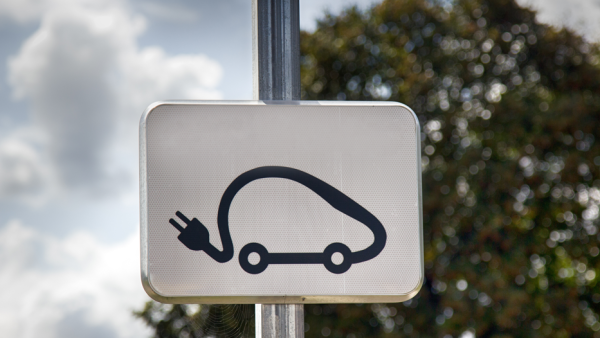As the electric vehicle (EV) market continues to expand, understanding the technical terminology surrounding Electric Vehicle Supply Equipment (EVSE) is crucial for both consumers and industry professionals. At ChargeTronix, we believe that knowledge is power, and this glossary will help demystify the protocols and terminology associated with EVSE chargers. Here’s a comprehensive guide to the key terms you should know.
1. AC (Alternating Current)
AC is the standard form of electricity supplied to homes and businesses. EV chargers convert AC power from the grid into DC power, which is stored in the EV’s battery. Most Level 1 and Level 2 chargers use AC, making it the most common type for residential and commercial charging stations.
2. DC (Direct Current)
DC power is the type of electricity stored in EV batteries. Unlike AC, which fluctuates in direction, DC flows in a single direction. DC fast chargers, commonly found at public charging stations, can charge an EV much faster than AC chargers by directly supplying DC power to the battery.
3. CCS (Combined Charging System)
CCS is a widely used charging standard that combines AC and DC charging into a single connector. This dual-purpose plug is designed for fast and efficient charging, making it a popular choice among North American and European automakers. CCS chargers are compatible with many EV models and are increasingly available at public charging stations.
4. J1772 (SAE J1772)
J1772 is the standard connector for Level 1 and Level 2 AC charging in North America. This five-pin connector is compatible with most EVs, including those from U.S. and European manufacturers. It supports charging at home, work, and public charging stations, making it a versatile and essential component of the EV ecosystem.
5. OCPP (Open Charge Point Protocol)
OCPP is an open communication protocol that allows EVSEs to communicate with a central management system. This standard ensures interoperability between different charging networks and equipment manufacturers. For ChargeTronix, using OCPP-compatible chargers means greater flexibility and compatibility with various back-end systems, enhancing the user experience.
6. OpenADR (Open Automated Demand Response)
OpenADR is a standardized communication protocol used in energy management, including demand response systems. For EVSEs, OpenADR enables chargers to adjust their output based on grid conditions, helping to balance electricity demand and supply. This protocol is crucial for integrating EV charging into the broader smart grid, ensuring a stable and efficient energy system.
7. Load Balancing
Load balancing refers to the distribution of electrical power across multiple charging stations to prevent overloading the electrical grid or the local power supply. For ChargeTronix customers, load balancing ensures that all connected vehicles receive an appropriate amount of power without causing disruptions or outages.
8. V2G (Vehicle-to-Grid)
V2G technology allows EVs to communicate with the power grid and return electricity stored in their batteries back to the grid when needed. This bidirectional flow of energy can help stabilize the grid during peak demand periods. V2G is an emerging technology with significant potential.
9. V2H (Vehicle-to-Home)
Similar to V2G, V2H technology enables an EV to power a home during a power outage or when electricity prices are high. This system provides an added layer of energy security for homeowners, allowing them to utilize their EV as a backup power source.
10. CTEP (California Type Evaluation Program)
CTEP is a certification program used in California to ensure that EVSEs meet the state’s stringent standards for accuracy in measuring and reporting energy usage. This certification is essential for ensuring that consumers are charged accurately for the electricity they use.
11. SAE J3072
SAE J3072 is a standard that governs the interconnection of EVs with the electric grid, particularly focusing on V2G and V2H applications. This standard ensures that the connection between an EV and the grid is safe and reliable, facilitating the integration of EVs into the broader energy ecosystem.
12. IEC 61851-1
IEC 61851-1 is an international standard that defines the general requirements for EV conductive charging systems. This standard covers various aspects of EVSE design, including electrical safety, communication protocols, and performance requirements.
13. IEEE 2030.5 (SEP 2.0)
IEEE 2030.5, also known as Smart Energy Profile 2.0 (SEP 2.0), is a communication protocol used in smart grid applications, including EVSEs. This standard facilitates the integration of EV charging with other smart grid technologies, enabling more efficient energy management and demand response.
14. ISO 15118
ISO 15118 is a standard that defines the communication protocol between an EV and an EVSE. This protocol supports Plug & Charge functionality, where the vehicle automatically identifies itself to the charger, streamlining the charging process. ISO 15118 also supports V2G communication, making it a key component of future smart charging networks. ChargeTronix is committed to integrating ISO 15118 into our chargers to provide a seamless and secure charging experience.
15. MODBUS
MODBUS is a communication protocol commonly used in industrial control systems, including EVSEs. It allows for the exchange of data between devices and central control systems, facilitating remote monitoring and management of charging stations.
16. Interoperability
Interoperability refers to the ability of different EVSEs and charging networks to work together seamlessly.
17. Smart Charging
Smart charging involves the use of technology to optimize the charging process based on various factors, such as energy prices, grid demand, and user preferences.
Conclusion
Navigating the world of EVSE chargers can be complex, but understanding these key protocols and terms will help you make informed decisions. At ChargeTronix, we are committed to providing charging solutions that are both reliable and easy to use. Whether you’re a seasoned EV owner or new to the electric vehicle community, our goal is to ensure that your charging experience is seamless and efficient.
